A New Year; a new season!
January. Traditionally a month of freezing temperatures and hard frosts, bare ground, minimal vegetation, and minimal natural enrichment. This is a time for wildfowl to hunker down, sit in sheltered hollows and catch any passing rays; all the time using up the fat reserves built up during the autumn months.
There are however some species which buck this trend. The joy of working at Slimbridge is that I get to help breed species from all around the world! Whilst most birds can all exhibit a certain "acclimatisation" to our native British weather (unpredictable at the best of times...) some birds appear to never break out of their natural rhythms and cycles. Below are a selection of species which even now are beginning to show the love...
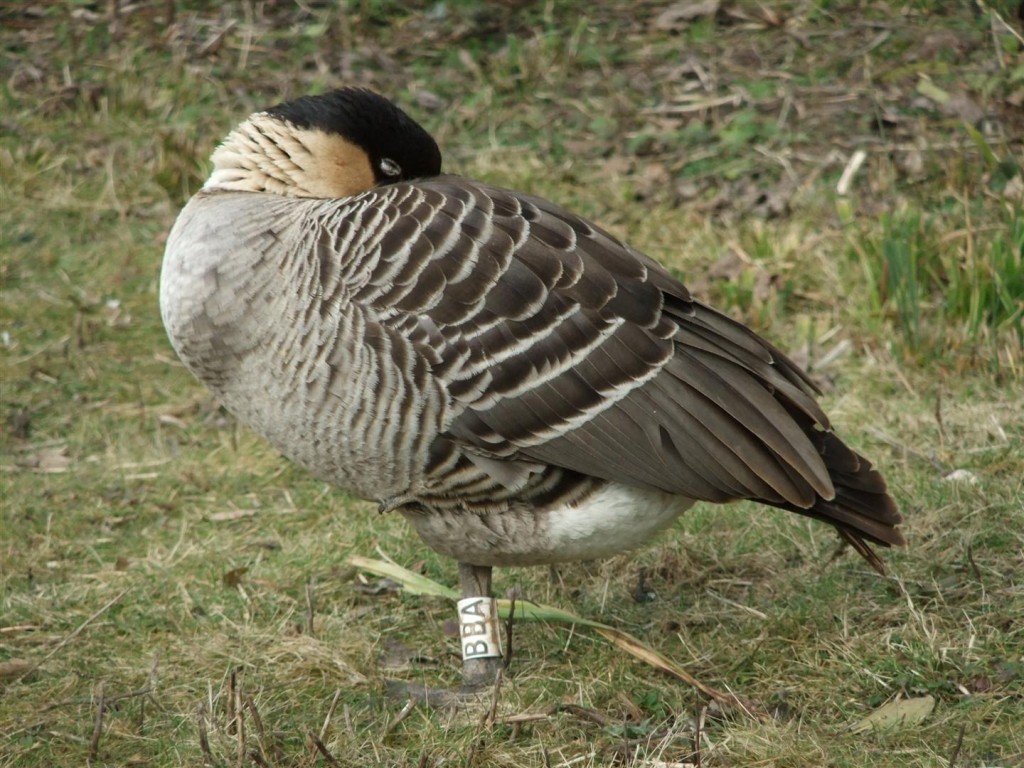
The Nene flock at WWT Slimbridge (and for that matter every bird holding centre!) has begun to exhibit some radical new behaviours in recent weeks. The families from the 2013 breeding season have split up, pairs have begun to establish themselves and re-gain their traditional territories. Bottoms have begun to swell! Arguments have raged, vocalisations have gone up a notch, and a couple of disinterested females have had to perfect their 100 metre dash! You see in Hawaii, their native land, it is the breeding season! In fact if you were lucky enough to be stood plumb in the the middle of a Hawaiian national park at this very moment; eggs would be pipping, and little feet would be toddling :)
The Nene know this. It is written into their bodies and no amount of British acclimatisation has removed it from them. And so, in the middle of our British winter, I await the first Nene egg. 2012's was laid on the 27th of January by BBF. 2013's was laid on February 2nd by BAX. News from private breeders already informs me that beloved Nenes across the country have already begun to lay their eggs from as early as January 4th! Let's see if we can't hold out for a Slimbridge record...
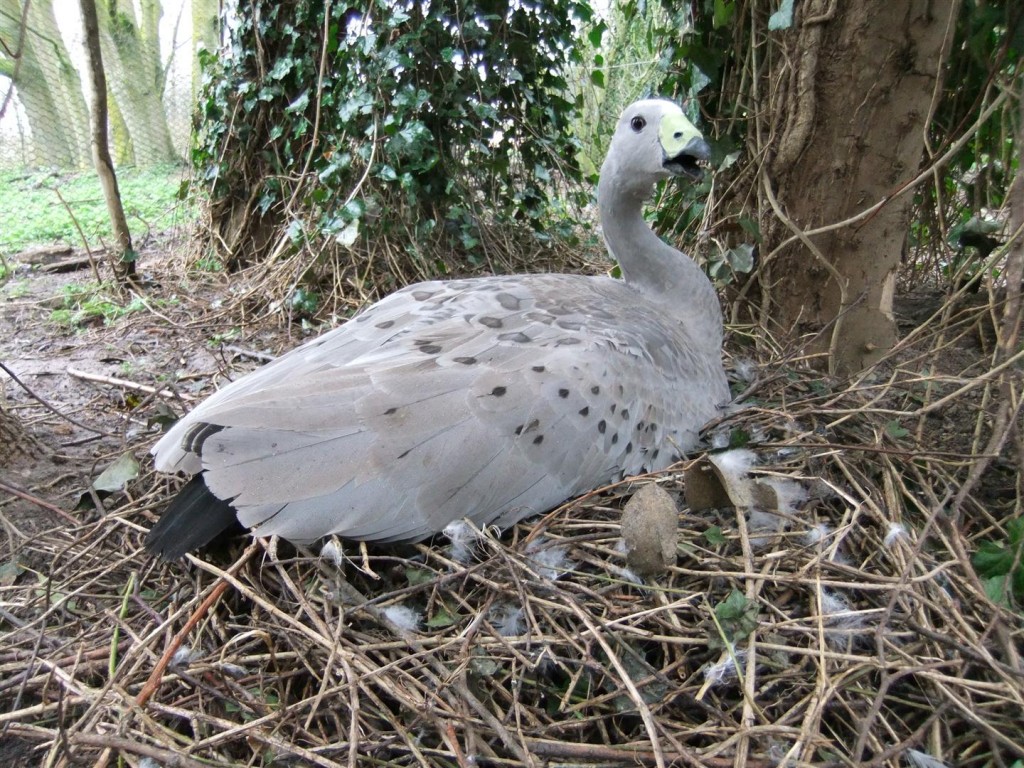
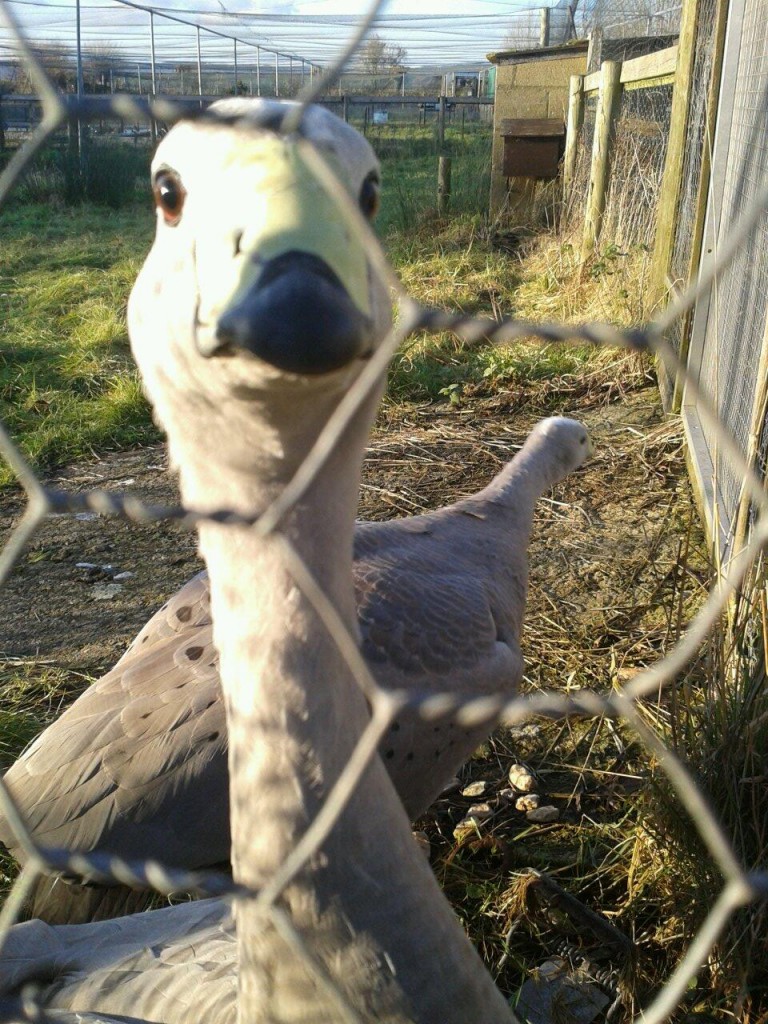
The Cape Barren or Cereopsis goose are another southern hemisphere special. These beautiful Australian blunderbusses also tend to lay their eggs in the middle of January. Previous years have seen failure in this species due to pen distruptance. This year the flooding has ruined their pen to such a degree that we have been forced to take them temporarily off site. They are relishing this unexpected opportunity to dominate a new stretch of ground, and with such good grazing on offer they have begun to show breeding behaviours.
Maybe just maybe, I might be able to experience the tiny patter of Cereopsis feet this year. They are the most adorable goslings, and I've only been lucky enough to witness them once. Classic sheldgeese; they have chunky dark grey legs, black and white striped bumble-bee bodies, and a perfect miniature adult beak complete with hook and teeny tiny black tongue! Cross your fingers!
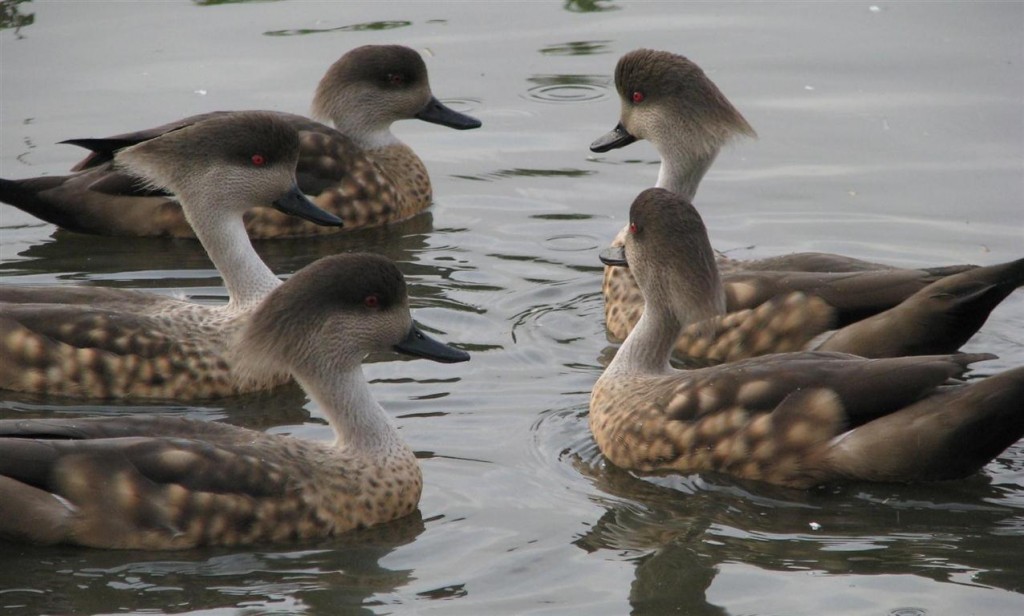
The Patagonian crested ducks are also getting fired up to breed. Despite the dull days, these lads are relishing the opportunity to impress the females. The males have the most remarkable control over their crests, and (much like the male middle left of shot) aim to get an erect neck, a perfect horizontal plumage line, and (out of shot) an erect tail. Clever males will approach the female from behind in full sun, so that when the female turns his bright red eye will be fully illuminated and his pale neck will shine. These snazzy features are backed up with wonderful marbled plumage and a feisty attitude.
We would expect nests from late February and ducklings in mid March. This is broadly similar to their wild breeding season, but in fact this species is known for its ability to manipulate its breeding patterns and exhibit a variety of breeding seasons throughout its range according to the available habitat type. You've got to love an innovator!
Personally I take great pleasure in witnessing a captive bird exhibit its natural rhythms, but there are extra things that you need to be aware of as a bird keeper. Knowing your birds are bound to breed, it is important that they get the correct supplements in their food. A bird loses on average a third of its body weight during the laying and incubation process, and so they need to put on a lot of fat and ingest a lot of protein before laying. Trying to fatten a bird during the British winter can be pretty hard, but there are several stimuli that can encourage a bird to breed, from day length, temperature, rainfall and food availability to jealousy and observations in other species. I hope then, that the species featured are choosing to breed because they are confident that they can do it!
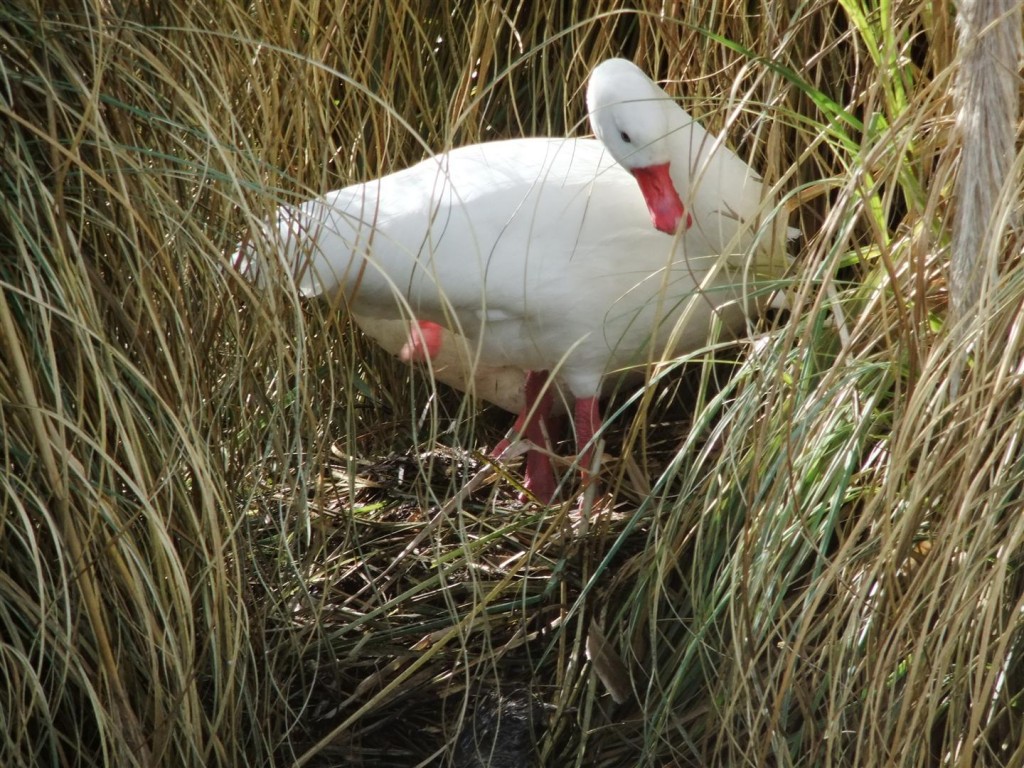
The Coscoroba swan comes from a very similar part of the world to the Patagonian crested duck, branching through southern Chile, Argentina and the Falkland islands; but unlike the Patagonians this species migrates! These feisty "missing links" are a brilliant species of waterfowl with which to observe evolution and ecology. With the beak, feet and body of a swan, but the legs, wings and head of a goose; these feisty swans really are one of a kind. The Coscoroba shows a species which has evolved to fill a niche of great specificity. Unlike the Northern swans their bodies are designed to be mobile, and due to their erect stance they can walk small distances to graze and find food. As one food source dries up they move their brood on to the next. They cannot afford to carry the weight of their Northern counterparts for this reason.
When looking at the larger waterfowl species of the Southern hemisphere, you could observe that in order to maintain their mass, species have had to diversify to maintain themselves. Sometimes their habitat type allows a more relaxed and sedentary lifestyle than that of their Northern counterparts. Other times they must work harder. No Southern hemisphere waterfowl species seem to carry much weight around. In fact the Screamers have evolved to have hollow bones and air pockets in their fatty tissue under their skin for insulation purposes. As the Sheldgoose is to the northern goose, so the Mute swan is to the Coscoroba. To me a Mute swan's aim in life appears to be "to be as lazy as possible," but I do wonder if they look side-long at the sturdy, pink and mobile legs of a Coscoroba with a certain sense of longing. I wonder what theories there are on this...

